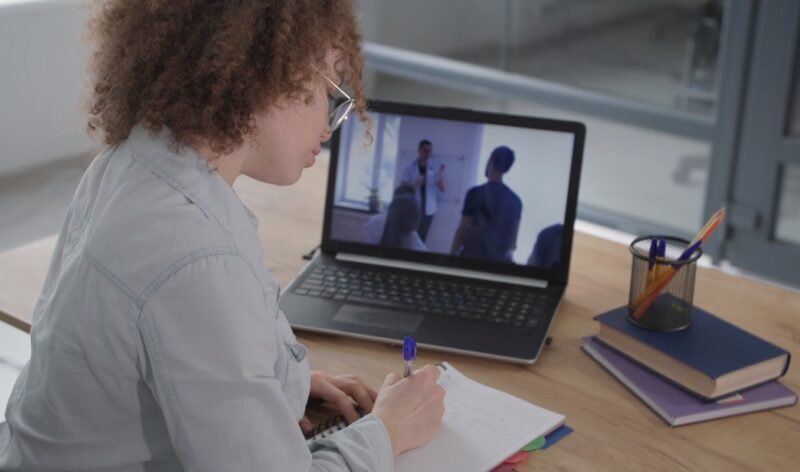The way we learn has changed a lot recently, with more classes happening online. It’s a big shift that affects how students study and interact with their lessons.
And most people will think about the benefits and the convenience it provides. But it’s not all perfect. While there are many advantages, it is important to determine and understand the downsides.
That is the only way to find a balance, improve the virtual lessons, and complement the ability to speak with people face to face.
It’s been a trend for a couple of years already. We will now share some insights about the real effects on students.
Let’s Start with the Positive Sides

Online learning has changed how we approach education, making it easier for many people to get the education they need.
Here are some clear benefits:
- Easy to Access: You don’t have to be in a specific place to learn anymore. If you have internet and a computer or smartphone, you can attend classes. This is great for people who live far from good schools or have busy schedules.
- Flexible Schedule: Online classes let you learn on your own time. You can work a job, take care of your family, or deal with other responsibilities while still going to school. This flexibility is a game-changer for many students.
- Wide Range of Courses: No matter what you want to study, there’s probably an online course for it. From coding to art history, online learning platforms offer courses from institutions all around the world.
- Self-Paced Learning: Everyone learns at their own pace. Online courses often let you take your time with the material, so you can understand it before moving on.
- Cost-Effective: Generally, courses can be cheaper than traditional colleges. You save on commuting, housing, and sometimes even course materials since a lot of resources are digital.
- Technology Skills: By taking online classes, you naturally get better at using technology. These skills are valuable in almost any job market today.
- Interactive Learning: Many of them offer interactive elements like forums, video calls, and real-time quizzes. These can make learning more engaging and help you understand topics better.
- Feedback and Support: Good programs offer plenty of support. You can get feedback on your work quickly and access tutors or help desks if you’re stuck.
But There are Downsides
While online learning offers many advantages, it’s not without its challenges.
- Lack of Personal Interaction: One big issue is the missing face-to-face interaction with teachers and classmates. This can make it harder to get motivated and stay engaged. For some, the classroom environment is a big part of learning, offering chances for spontaneous discussion and immediate feedback that online formats might not capture as effectively.
- Self-Discipline Required: To succeed in an online course, you need a lot of self-discipline. Without the structure of regular class times, it’s easy to procrastinate or fall behind. This is tough for students who thrive on the external motivation of traditional classroom settings.
- Limited Hands-On Learning: For subjects that require lab work, fieldwork, or other hands-on activities, online learning can fall short. There are simulations and virtual labs, but they might not fully replicate the in-person experience.
- Screen Fatigue: Staring at a screen for hours on end can be tiring and even harmful to your eyes. Many students experience screen fatigue, which can lead to headaches, eye strain, and a decrease in overall well-being.
- Questionable Quality: Not all online courses offer the same level of quality. Some might be poorly designed or lack the depth of a traditional course. Students need to research and choose reputable programs.
- Isolation: Learning from home can be lonely. Without the social interactions that come with a physical campus, students might feel isolated or disconnected from their peers and instructors.
- Cheating and Academic Integrity: It can make it easier for students to cheat on assignments and exams. This is a concern for educators and honest students, as it can devalue the education received.
We must also mention the challenges that permanent online schooling would bring to families with lower incomes.
Research provided by Emily A. Vogels, a social scientist and a writer for the Pew Research Center provides some concerning details:
- Around 41% of lower-income adults do not have a desktop or laptop computer, and a majority do not own a tablet.
- Americans with higher incomes are more likely to have multiple devices for online access, with 63% having home broadband, a smartphone, a desktop or laptop computer, and a tablet, compared to 23% of lower-income households.
This leads to the surprising conclusion that even the US, known as a country with a high living standard, is still not ready to completely pass to online schools. Therefore, it may even require a set of rules like the ones against discrimination in education.
These issues were especially challenging during the pandemic. According to USA Facts:
Social and Mental Aspects

The transition to online learning has deeply impacted students’ social interactions and mental health.
In a traditional classroom, the daily interactions with teachers and peers play a crucial role in developing social skills and building a sense of belonging.
Online platforms, despite their best efforts to create interactive environments, often fall short of replicating this experience. The result is a noticeable gap in casual social learning opportunities, which can leave students feeling isolated.
The sense of isolation can extend beyond the screen, affecting students’ mental well-being.
The lack of separation between home and school environments can blur personal boundaries, leading to increased stress and difficulty in managing schoolwork.
Moreover, the absence of physical presence in a learning community can make students feel disconnected, not just from their peers, but from the learning process itself. This disconnection poses challenges to maintaining motivation and engagement, which are vital for successful learning outcomes.
The study from UC Davis found that teenagers learning online because of COVID-19 felt lonelier and less happy with school than those who could go in person. Kids who had to study on the internet also felt more stressed and had a harder time making friends. Social media and video games didn’t help much in making them feel better or more connected to others.
The Bottom Line
Online learning has transformed how we access education, bringing both opportunities and challenges.
While it offers convenience and a wide range of learning materials, it also raises concerns about social isolation and mental health.
Balancing these aspects is key to making the most of online education.

